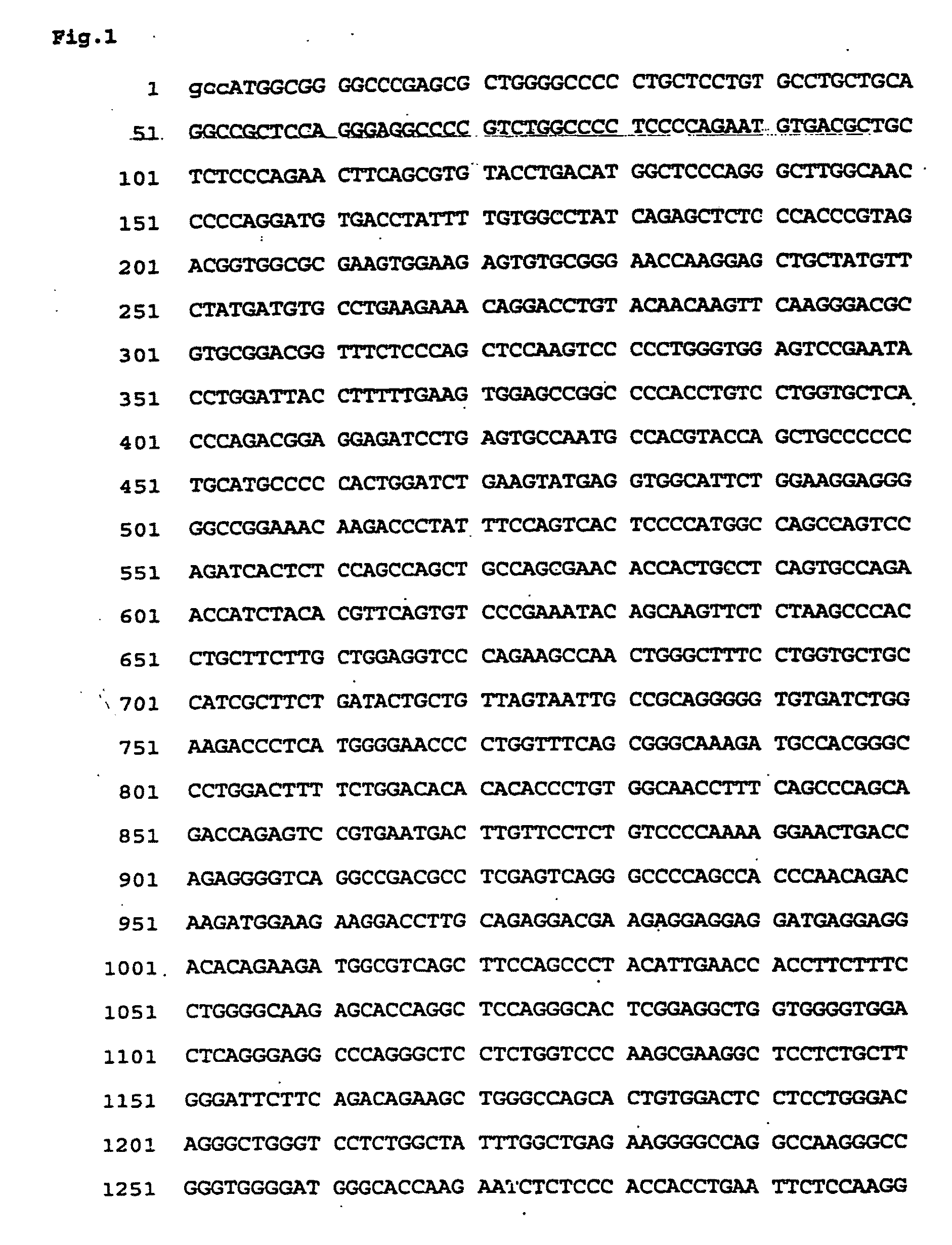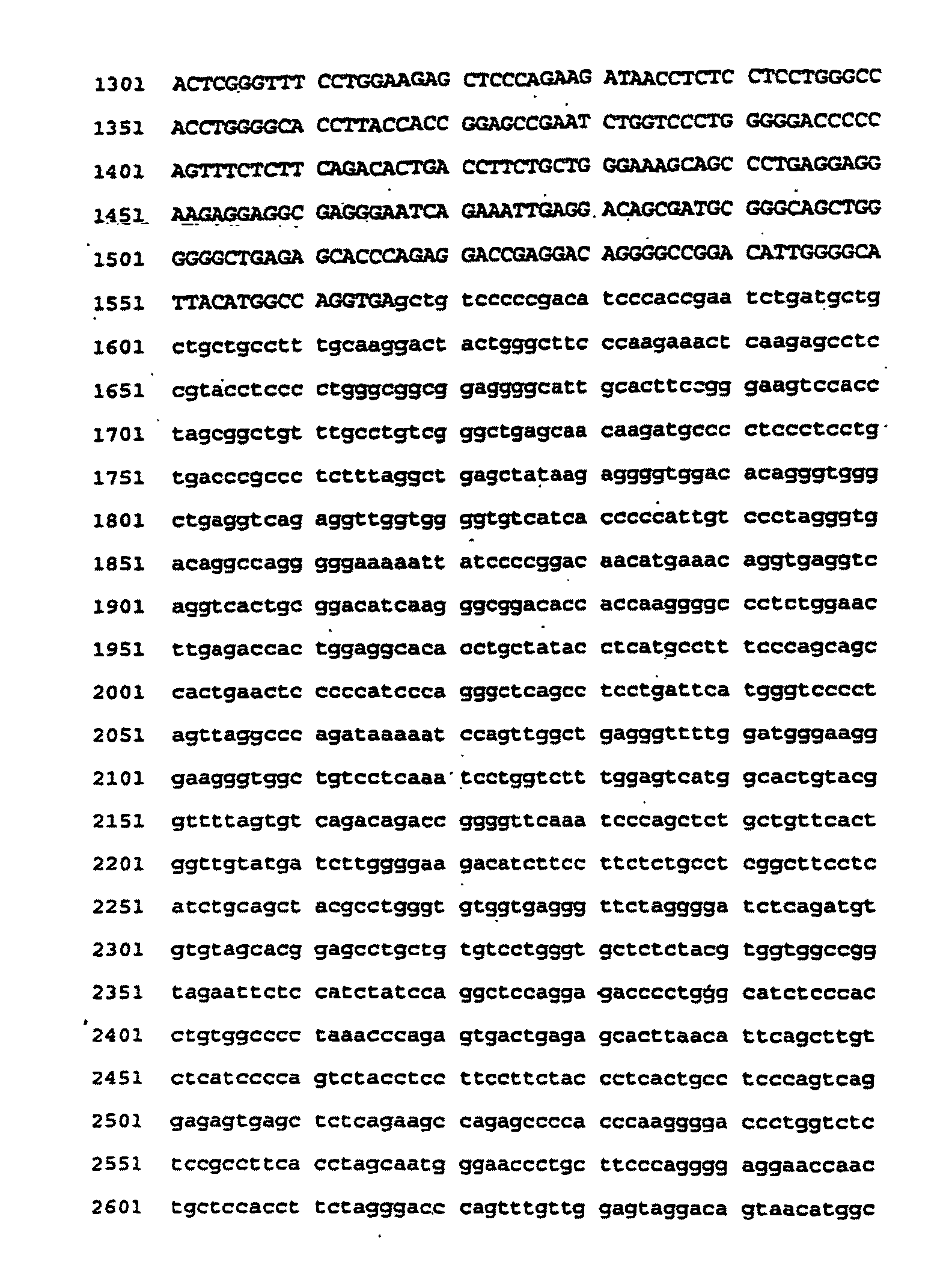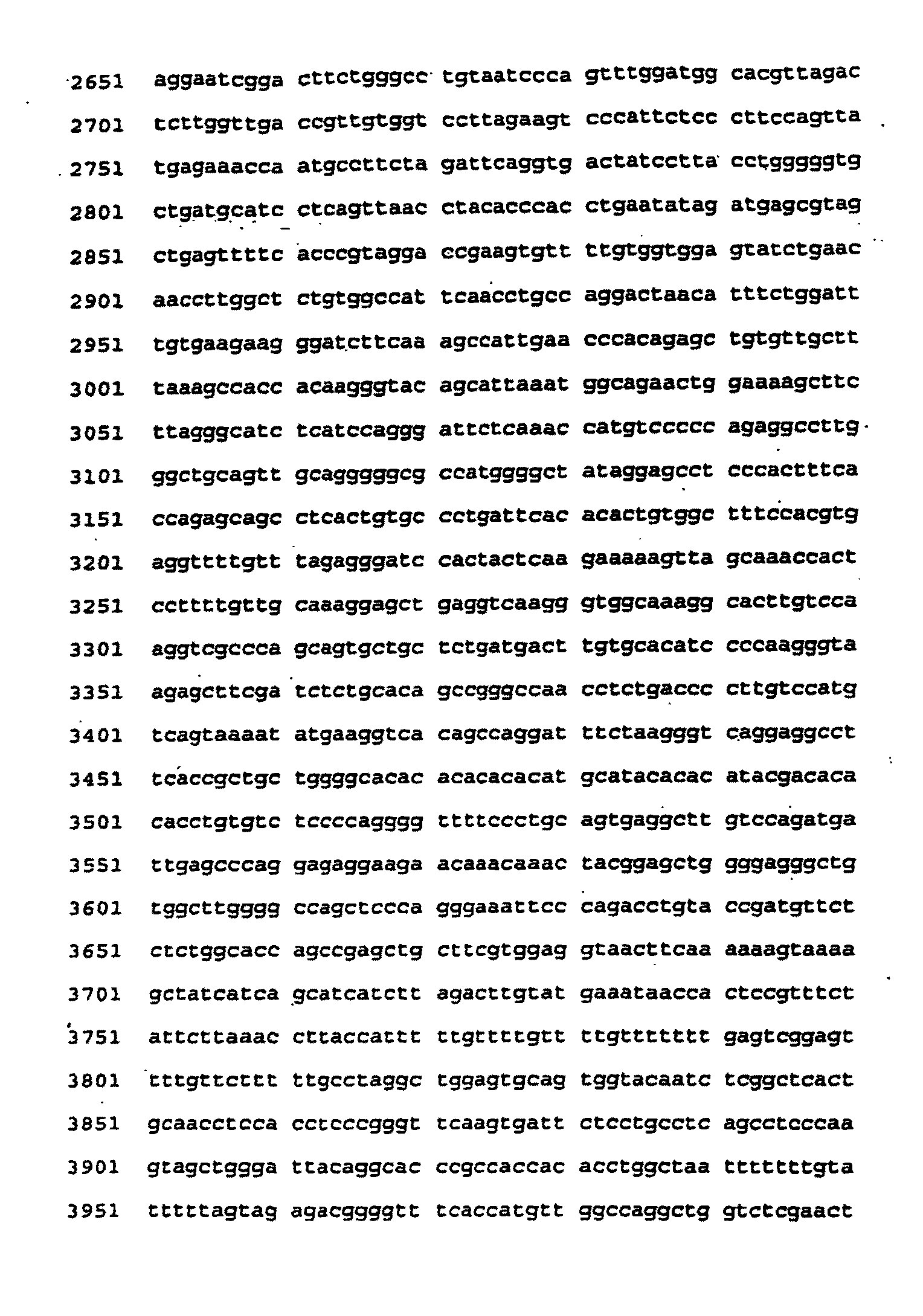Ifn-alpha/beta-independent mechanism of antiviral protection through a novel ligand-receptor pair: Ifn- ligands engage a novel receptor Ifn-Rn (CRF2-12) and IL-10R2 (CRF2-4) for signaling andinduction of biological activities
a ligand-dependent, antiviral technology, applied in the direction of fusion polypeptides, peptide/protein ingredients, depsipeptides, etc., can solve the problems of il-10 homologue signaling that cannot be realized by itself, interfere with transcriptional function and/or trafficking, and affect cell viability, etc., to achieve the full potential of il-10 homologue signaling and reduce the level of interferon activity , the effect of increasing the level o
- Summary
- Abstract
- Description
- Claims
- Application Information
AI Technical Summary
Problems solved by technology
Method used
Image
Examples
example 1
Cloning of the CRF2-12 cDNA
Expression Pattern and Protein Characterization
[0505]A search of the GenBank database was performed with the TBLASTN program using as a query a consensus amino acid motif shared by extracellular domains of class II cytokine receptor family members. A genomic fragment from human chromosome I encoding a novel amino acid (a.a.) sequence with homology to the consensus motif was identified. This genomic fragment mapped in the vicinity of a known member of the family, namely, the IL-22R1 (CRF2-9) gene (1p36+11 chromosomal region). According to the present invention this fragment represented an exon of a novel receptor from this family of receptors.
[0506]The existence of a gene (Hs1—4548—30—10—1) in this region was predicted by GenomeScan (NCBI web site) (5). However, according to the present invention the last four exons were predicted incorrectly by the program, and the last exon encoding intracellular domain of the receptor of the present invention is differen...
example 2
CRF2-12 Characterization
[0520]In accordance with the present invention, CRF2-12 was found to possess a characteristic signal peptide of about 18 a.a. and a 23 a.a. transmembrane domain (227 to 249 a.a.), which divides the receptor into a 208 a.a. extracellular domain and a relatively long 271a.a. intracellular domain (FIG. 14A).
[0521]Alignment of the extracellular domains of the class II cytokine receptors assigned CRF2-12 in a subgroup with several other receptors, CRF2-8, CRF2-9, CRF2-10, IL-10R1 and IFN-γR (FIG. 14B).
[0522]In accordance with the present invention, the entire CRF2-12 gene of the invention is composed of 7 exons (FIG. 14C). The structure of the gene of the present invention was found to correlate with the common conserved architecture of other genes encoding CRF members (Kotenko 2002).
[0523]The first exon of the CRF2-12 gene of the present invention contains the 5′-UTR and the signal peptide. Exons 2, 3, 4 and 5 and a part of exon 6 of the CRF2-12 gene of the prese...
example 3
CRF2-12 Expression
[0525]To determine what cell types express CRF2-12, a panel of RNA derived from various tumor cell lines was evaluated.
[0526]Expression of CRF2-12 mRNA.
[0527]Northern blotting was performed as described (Gallagher, et al., (2000) Genes Immun 1, 442-450 and Kotenko, et al., (2001) J Biol Chem 276, 2725-2732) with the use of a CRF2-12 probe corresponding to the coding region of the CRF2-12 cDNA.
[0528]Northern blotting was performed on two blots containing mRNA isolated from: human cancer cell lines (promyelocytic leukemia HL-60, epitheloid carcinoma HeLa S3, lymphoblastic leukemia MOLT-4, Burkitt's lymphoma Raji, colorectal adenocarcinoma, SW480, lung carcinoma A549 and melanoma G361) and normal human fetal tissues (heart, kidney, skin, small intestine) and adult lung (FIGS. 15A and 15B). Arrows point to the CRF2-12 and the b-actin transcripts. Equal RNA loading was assessed by evaluating the expression of the b-actin gene.
[0529]CRF2-12 mRNA was expressed at variable...
PUM
| Property | Measurement | Unit |
|---|---|---|
| molecular weight | aaaaa | aaaaa |
| molecular weight | aaaaa | aaaaa |
| molecular weight | aaaaa | aaaaa |
Abstract
Description
Claims
Application Information
 Login to View More
Login to View More - R&D
- Intellectual Property
- Life Sciences
- Materials
- Tech Scout
- Unparalleled Data Quality
- Higher Quality Content
- 60% Fewer Hallucinations
Browse by: Latest US Patents, China's latest patents, Technical Efficacy Thesaurus, Application Domain, Technology Topic, Popular Technical Reports.
© 2025 PatSnap. All rights reserved.Legal|Privacy policy|Modern Slavery Act Transparency Statement|Sitemap|About US| Contact US: help@patsnap.com



